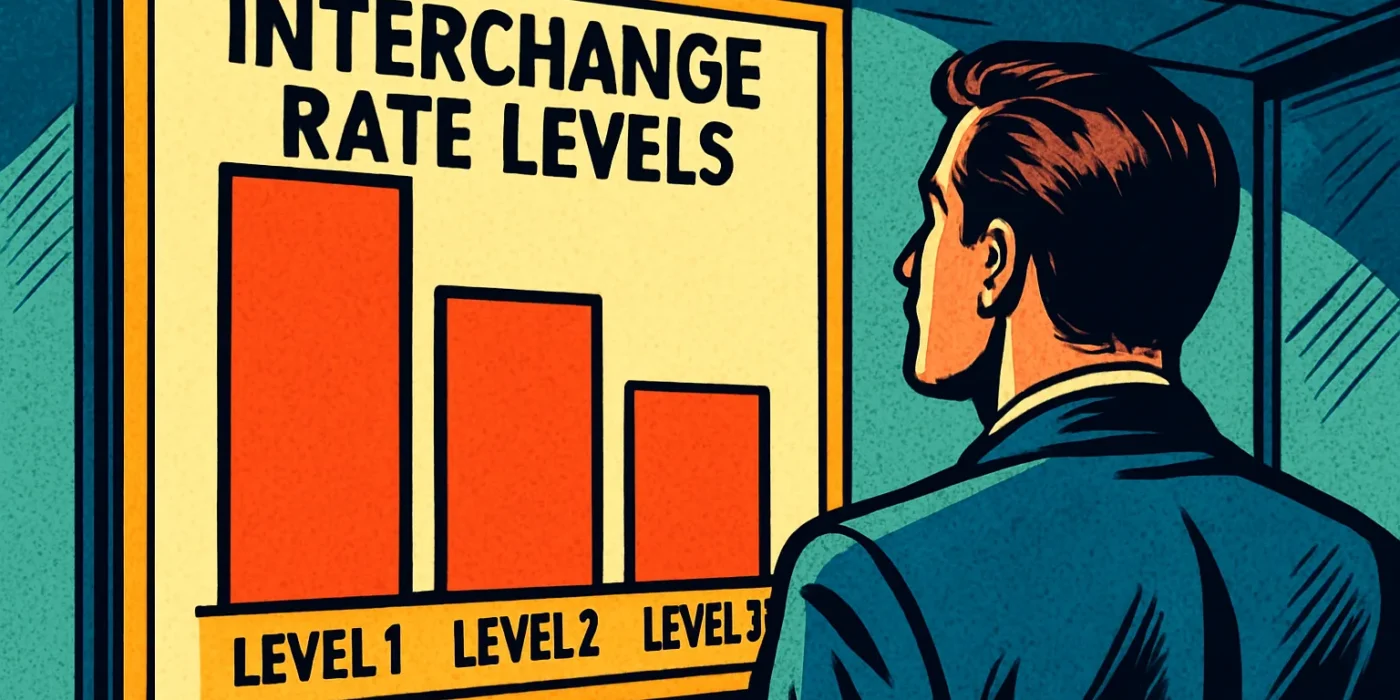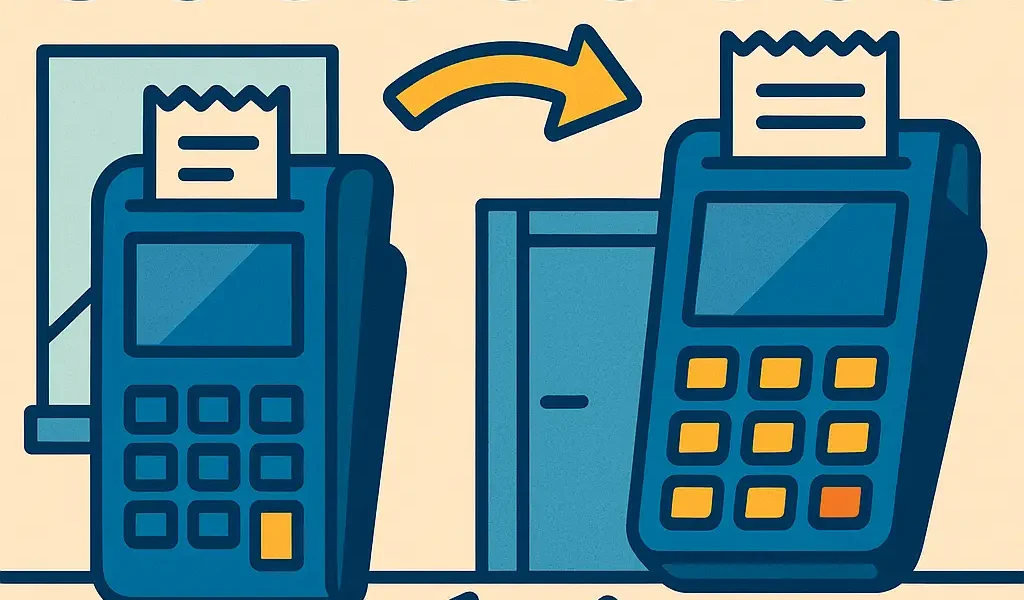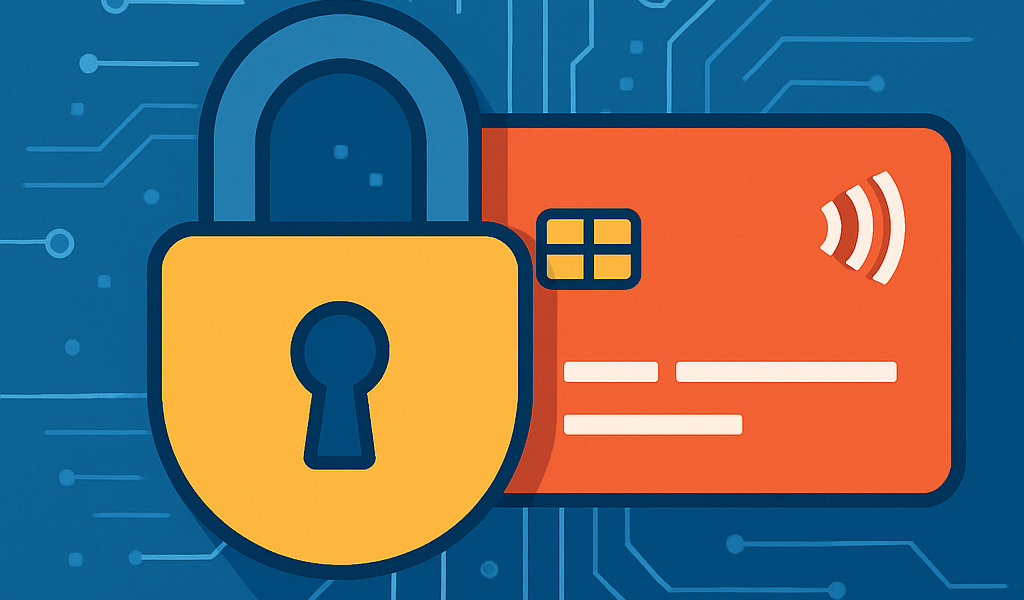You Could Be Missing Out on Lower Interchange Rates
A little known secret within the credit card processing industry is that Interchange has discounted tiers that many businesses qualify to take part in, but few ever get the opportunity. Why don’t processors promote these options more? We’ll get into that later in this article. First, lets cover the three options as they are categorized in the industry: Level 1 Interchange, Level 2 Interchange, and Level 3 Interchange.
What is Interchange?
In short, Interchange is the name of the various base processing fees as set by the card networks, such as Visa and MasterCard. Interchange fees vary primarily by industry, card brand category, transaction method, and sales amount. Interchange is a non-negotiable cost of credit card processing and your processor profits on your transactions by building margins on top of the Interchange rates.
How Levels of Interchange are Determined
The “level” of interchange a transaction qualifies for is determined by the amount of detail a business provides when submitting the payment to the card networks. At the most basic level only standard payment data is sent, such as the card number, expiration date, and total amount. To unlock lower-cost interchange categories, additional information must be transmitted along with the transaction.
Card networks set strict criteria for these levels, and processors act as the gateway that ensures the required data is passed through. Businesses that provide more transaction data help the networks reduce risk, improve reporting accuracy, and combat fraud. These reduced risks translate to discounts in Interchange costs. The richer the transaction detail, the higher the level of qualification, and the lower the costs. The potential Interchange discounts can be especially beneficial for businesses handling large transactions, B2B sales, or government contracts, where even small reductions in rates can lead to significant savings.
Level 1 Interchange: Basic Business Rates
Level 1 Interchange refers to the highest baseline category of interchange fees charged by the card networks, and it typically applies when merchants do not submit the extra transaction data beyond the card information. Because Level 1 transactions carry the least amount of detail, they are treated as higher risk transactions from the card networks’ perspective. As a result, they come with the industry’s standard interchange rates. In other words, Level 1 is the “default” or fallback pricing structure.
Common Industry Categories
Level 1 Interchange is most commonly used by businesses that process general consumer transactions without any special reporting requirements. Examples include restaurants, retail shops, salons, convenience stores, and most small businesses where the customer is simply making a straightforward purchase with a personal credit card. For businesses in these categories, Level 1 interchange is essentially their only option.
Level 2 Interchange: Enhanced Data
Level 2 Interchange is a mid-tier category designed for business-to-business (B2B) and government transactions that require more detail than a standard consumer purchase. To qualify, businesses must include additional data fields beyond the basics of Level 1. These typically include the sales tax amount, a customer code, and sometimes an invoice number or purchase order reference. By supplying this information, the transaction carries less perceived risk for the card networks, since the added detail makes fraud less likely and provides greater transparency for corporate or government buyers. The reward for businesses is a lower Interchange rate compared to Level 1, often leading to meaningful cost savings on high-volume accounts.
Industries That Benefit From Level 2
Level 2 interchange is most commonly used by merchants selling to businesses or government agencies, such as office supply companies, wholesalers, software providers, and contractors. Even some consumer-facing businesses, like hotels or car rental agencies, can qualify if they collect and transmit the right data fields. For many companies processing larger transactions or invoiced sales, failing to provide Level 2 data means leaving significant money on the table.
Level 2 Required Data Fields
- Sales tax amount (total tax charged on the transaction; use “0” if not applicable)
- Tax indicator (indicates if sales tax was applied; “Y” for yes, “N” for no)
- Customer code (unique identifier for the buyer, such as a purchase order number or internal client reference)
- Merchant postal/ZIP code (your business address postal or ZIP code for location verification)
- Merchant tax ID (your business’s tax identification number, like EIN or TIN)
- Invoice or order number (internal number assigned to the sale or purchase)
Missing any of the above fields will result in the transaction processing at either Level 1 or “non-qualified” rates.
Level 3 Interchange: Comprehensive Data
Level 3 Interchange represents the most detailed and lowest-cost category available, built specifically for high-value business-to-business (B2B) and business-to-government (B2G) transactions. To qualify, merchants must transmit a comprehensive set of data fields with each transaction. In addition to the basic and Level 2 fields, Level 3 requires line-item details such as product descriptions, quantities, unit costs, freight amounts, duty, and tax information. This level of transparency allows card networks to verify purchases at a granular level, greatly reducing the risk of misuse or fraud. Because of the extra reporting, card networks reward these transactions with the lowest interchange rates compared to Levels 1 and 2.
Industries That Benefit From Level 3
Level 3 interchange is most often used by large suppliers, government contractors, manufacturers, and enterprises that sell to other corporations. Examples include technology providers, industrial equipment suppliers, and defense contractors; businesses that routinely process invoices with multiple line items and high transaction values. These businesses typically use specialized payment gateways or ERP-integrated systems capable of capturing and transmitting the required Level 3 data. While the setup can be more complex, the savings on interchange fees for businesses processing large volumes of corporate or government cards can be substantial, making Level 3 qualification a competitive advantage in sectors where margins are tight.
Level 3 Required Data Fields
- Sales tax amount (total tax charged on the transaction; use “0” if not applicable)
- Tax indicator (indicates if sales tax was applied—“Y” for yes, “N” for no)
- Customer code (unique identifier for the buyer, such as a purchase order number or internal client reference)
- Merchant postal/ZIP code (your business address postal or ZIP code for location verification)
- Merchant tax ID (your business’s tax identification number, like EIN or TIN)
- Invoice or order number (internal number assigned to the sale or purchase)
- Line item product/service description (brief text describing each product/service sold)
- Product/service code or part number (SKU, UPC, or internal item identifier for each product or service)
- Quantity (number of units for each product/service line)
- Unit of measure (measurement used, e.g., “each,” “case,” “lbs,” “hours”)
- Unit price (price per unit of product/service)
- Extended item amount (line item subtotal, calculated as unit price × quantity)
- Discount amount (any amount discounted for a specific line item, if applicable)
- Freight/shipping amount (total charge for shipping on the order/line item, if applicable)
- Duty amount (any import duty or government fees, if applicable)
All fields above are required for full Level 3 qualification; missing any details may cause a downgrade to Level 2 or 1 rates.
The Processing Industry’s Dirty Little Secret
If you have a business that qualifies for Level 2 or 3 Interchange, you might be asking yourself why your processor has never brought up this option for you. Or, you may be wondering why no other processor has marketed these levels to you. The reality is that many processors deliberately avoid discussing Level 2 and Level 3 qualification because it exposes one of their most profitable practices: Interchange arbitrage.
Here’s How it Works
When your transactions qualify for Level 2 or Level 3, the card networks charge your processor a reduced Interchange fee. But instead of passing that savings on to you, many processors keep you locked into a rate that doesn’t change regardless of the underlying Interchange category. The worst examples that we have seen are when processors bill clients at Level 1 Interchange rates despite the fact that they are actually incurring Level 2 and 3 on their end. That means the transactions were already settling at the reduced Level 2 or 3 cost, but the processor is pocketing the difference as hidden profit.
Because these details are often buried or missing in merchant account statements, and rarely itemized in a comprehensive manner if that are, most business owners have no idea this is happening. This lack of transparency allows processors to market “simplified pricing” or “Interchange rates” while quietly collecting a margin that can stack up to thousands of dollars each year.
How to Get Level 2 and 3 Interchange Rates
Unlocking Level 2 and 3 interchange rates isn’t as simple as flipping a switch. It requires the right setup, the right data, and the right advocate in your corner. Most payment processors won’t volunteer this information because it eats into their profits, which is why working with a knowledgeable expert is often the only way to achieve the full cost reduction of these levels. This is where we come in because we specialize in navigating these complexities. We know exactly which data fields need to be captured, which gateway settings need to be enabled, and which processors will actually honor the reduced Interchange categories rather than pocketing the difference for themselves.
Beyond just qualifying you for lower rates moving forward, we can also perform a forensic review of your past statements to identify where your provider has been arbitraging Level 2 and Level 3 transactions. In many cases, we have help businesses claw back excessive or hidden charges. In one such case, we secured a lump sum $500,000 refund for a client that they didn’t expect. As you can imagine, they were very pleased by this.
We have a dual approach: secure our clients the lowest rates for future savings while reclaiming money that never should have been taken in the first place With our expert guidance, you don’t just hope for lower costs; you gain a partner who ensures you actually see them on your bottom line.



